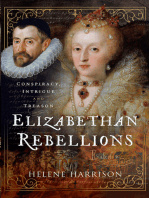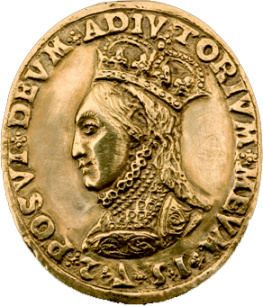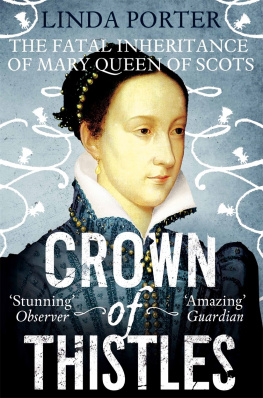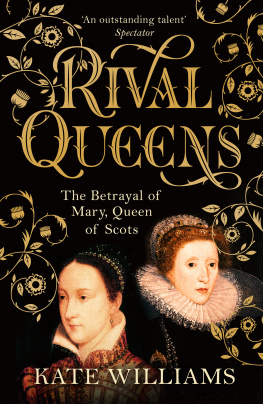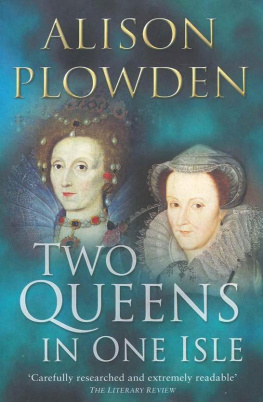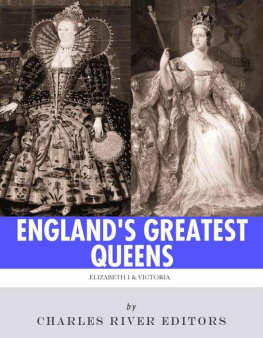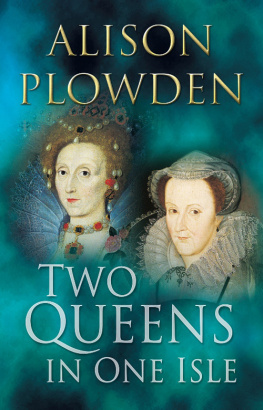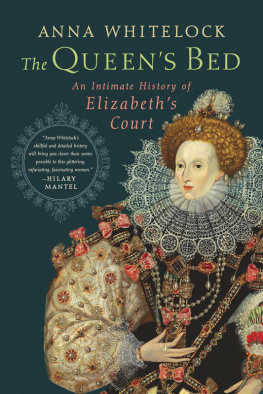Edith Sitwell
The Queens and the Hive

To George Cukor
This electronic edition published in 2011 by Bloomsbury Reader
Bloomsbury Reader is a division of Bloomsbury Publishing Plc, 50 Bedford Square, London WC1B 3DP
Copyright the Estate of Dame Edith Sitwell, 1962
First published by Macmillan 1962
The moral right of the author has been asserted
All rights reserved
You may not copy, distribute, transmit, reproduce or otherwise make available this publication (or any
part of it) in any form, or by any means (including without limitation electronic, digital, optical,
mechanical, photocopying, printing, recording or otherwise), without the prior written permission of the
publisher. Any person who does any unauthorised act in relation to this publication may be liable to
criminal prosecution and civil claims for damages
ISBN: 9781448200207
eISBN: 9781448201525
Visit www.bloomsburyreader.com to find out more about our authors and their books
You will find extracts, author interviews, author events and you can sign up for
newsletters to be the first to hear about our latest releases and special offers
Contents
The clangour of mailed footsteps, sounding like a storm of hail in the passages of the Tower of London, died away; and now a black frost of silence sealed the world from all life.
The outer world seemed dead. The memorials of King Henrys vengeance, the eternal smiles, the unheard laughter fixed to the turrets of the Tower, did not relax their soundless merriment at the thoughtvisiting, perhaps, the heads from which the brain had long since disappearedthat the daughter of the woman for whose sake they had reached this show of gaiety might soon be going to join her.
Round that laughter, black rags (of cloud? of some remnants left of their humanity? of the wings of birds of prey?) flapped lazily.
The young girl with the lion-coloured hair and the great golden haunting eyes who had just entered the Tower by the Traitors Gate sat, quite quietly, looking at the door of her prison, as if she waited for someone.
And still there was no sound, save that of distant weeping.
The tears of Mrs Ashley, the governess of this twenty-year-old girl waiting for death, if this could be encompassed by the Council and her sisters lawyers, fell from a heart that knew the nobility, the Christian love and forgiveness of that elder sisters soul and heart, before these were poisoned, when she became Queen, against the forlorn being she had befriended. Black bitterness, a slow, sure poison, had been skilfully instilled into that noble heart, assured at last of Elizabeths treachery towards herindeed that she had connived at the plot of the traitor Sir Thomas Wyatt, son of the poet, to seize the Crown on her behalf, and end not only Marys reign, but her life. Had not Wyatt denounced her, when he was taken, in the hope of saving himself?
Mary, now thirty-eight, had forgiven, had not visited upon her half-sister the endless and intolerable insults, injuries, and dangers that had fallen upon her since Elizabeths birthhad forgiven her own bastardization brought about in order that the baby Elizabeth should take her place as heiress to the throne, had forgiven being sent to the babys household, not as a Princess, but as a dependant, with the order from her stepmother, the usurper-Queen, Anne Boleyn, that if she persisted in retaining her state as Princess, and refused to eat at the common table, she was to be deprived of food, and beaten and buffeted like the cursed bastard that she was.
But soon the baby who had been proclaimed heiress to the throne of England in Marys place was, following her mothers execution, pronounced, in Parliament, a bastard.
It was then that Marys true nobility showed itself. In answer to the dying prayer for forgiveness from the woman who was the author of the tragedy, she protected and loved the little creature, aged three and a half years, who now had neither gown nor kirtall [slip], nor petticoat, nor no manner of linnen, nor foresmocks [pinafores], nor kerchief, nor rails [nightgowns], nor mofelers [mob-caps], nor biggens [nightcaps], and who now shared the nursery palace with her. Her tenderness, her care for that forlorn child were endless.
And this was the being who all the while (so she was told) had laughed at her, mocked her, and who had now plotted her death.
Before Elizabeth was sent to the Tower, she wrote Mary a letter, imploring her to admit her to her presence, saying I pray to God I may die the shamefullest death that any one ever died, if I may mean any such thing (as to try to encompass Marys destruction) practised, counselled, nor consented to anything that might be prejudicial to your person in any way, or dangerous to the state by any means
I pray God evil persuasions persuade not one sister against the other, and all for that they have heard false report, and the truth not known.
But the Queen did not answer.
To come to any understanding of the being in whose reign the greatness of England began, and to understand her relations with her sister Mary, we must consider the circumstances of her birth.
To Anne Boleyn, Elizabeths mother, and to many others, that birth in 1533 had been like the birth of Fate.
It was preceded by the Sophoclean drama of King Henrys escape from a real or imagined incest (that of his marriage with his brothers widow, Marys mother)cursed by Heaven with the decree that no male child born of that marriage should live.
That drama of passions, faiths, lusts, and ambitions that had the fever of lust, was brought about in part by a spiritual upheaval in the history of mankind, in part by the absolute necessity, if the country were to be preserved from civil war, that King Henry should provide a male heir to the kingdom.
King Henry, that lonely being, a giant in scale, a creature of powerful intellect and insane pride, of cruelty, vengeance, and appalling rages, of regal generosity and breadth of understanding, helped to bring about a tragedy through two factorshis kingly sense of duty to his people, and his curious power of self-deception, which enabled him to see his long infatuation for Queen Catherines maid of honour, Anne Boleyn, as a part of his duty.
He put aside his Queen, and married the object of his infatuation, who was young, and would surely bear him a son.
The King, the Princess of Aragon who was his Queen -a dark and sombre Niobe, weeping for the death of her sonsand Anne, the light summer existence that supplanted her, these played out their tragedy lit by the fires in which the martyrs perished, kindled in vindication of Henrys regency under God in place of the Popewho had refused to allow the Kings divorce from Queen Catherine, and whose power, therefore, the King defiedand in homage to the son who was soon to be born to the witch-Queen Anne and to Henry, that almost supreme being.
But to the shame and confusion of the physicians, astrologers, witches and wizards, who had assured the King that the coming child would be a son, the Lady, as the Ambassador to the Emperor Charles the Fifth persisted in calling her, was delivered of a daughter.
The Kings fury, raging for three days, breaking from the fires and darkness of his nature, had been terrifying to see. The child a girl? Was it for this that he had defied the Pope, denied his supremacy, overthrown the established church in England? Was it for this that he had risked war with the Emperor, Queen Catherines nephew, so that he might marry Anne Boleyn, with the great slanting black eyes and a long throat on which was a mole like a strawberry -this being kept hidden by a collar of big pearls which, from time to time, she would pull aside with her left hand, on which was a rudimentary sixth finger, the sure sign of a witch. It had been whisperedand now the King was sure of itthat not Sir Thomas Boleyn, but the Prince of the Powers of the Air, was the new Queens father.
Next page

